In this issue:
EPA proposes Clean
Energy Incentive Program details
On June 16, 2016, the U.S. Environmental Protection Agency proposed
design details for the Clean Energy Incentive Program, an optional component of
the Clean Power Plan intended to incentivize early development of clean energy
programs and projects, particularly in low-income communities. Though the Clean Power Plan is currently
stayed by the Supreme Court, EPA’s proposal is a response to a request
from 14 states, including Minnesota, to provide guidance and information about
the CEIP and other aspects of the Clean Power Plan.
EPA’s proposal outlines several key design elements for the
program, including criteria for eligible projects and distribution of the pool
of matching allowances/credits between renewable energy and low-income targeted
projects. The proposal is open for comments to EPA until August 29th
and is available for review here.
EPA proposes
revisions to the Regional Haze Rule
EPA’s Regional Haze Program is designed to improve
visibility at our nation’s wilderness areas and national parks. EPA recently proposed revisions to the rule,
which describes actions that states must take when submitting regional haze
state implementation plans (SIPs) that describe each state’s plan for improving
visibility in the wilderness areas and national parks within or near the
state’s borders. The proposed revisions
are intended to streamline, strengthen, and clarify the regional haze program.
EPA has also issued draft guidance on the program to advise states on how to
develop and submit regional haze SIPs for the next implementation period and
supplement the proposals in the rule.
The regional haze program is a long-term air planning
program, targeting visibility improvements through 2064 via incremental SIPs
and progress reports. States have submitted the first round of comprehensive
SIPs, which planned for visibility protections through 2018. The next implementation
period will target visibility improvements through 2028 and is the focus of
EPA’s rule and guidance proposals. The comment period for the rule proposal
closes on August 10, 2016; the proposal is available here.
The comment period for the draft guidance closes on August 22, 2016; the draft
guidance document is available here.
 The latest and
greatest exhibit at the State Fair is all about “kicking gas” and choosing
multi-modal transportation options instead. When you’re at the Fair this year, swing by
the Eco Experience to check out our new exhibit on choosing a multi-modal
commute and all the environmental, social, and economic benefits of kicking
gas!
The
transportation sector produces 30% of Minnesota’s greenhouse gas emissions and
about 25% of emissions of other pollutants that can contribute to health
impacts such as asthma. Skipping the car
commute to work just once a week reduces your commute emissions by 20%. Think if everyone did that! Biking more and
driving less is a small personal change that makes a tremendous impact.
Big impacts call
for Big exhibits, like the “world’s biggest bike” you’ll find hanging from the
ceiling at the Eco Experience. You can
hop onto a regular bike on the ground below, start pedaling, and watch the
gigantic eight-foot bike wheels turn above you.
Then visit our other interactive displays including:
-
Check
out the bike corral, where you can learn about different kinds of bikes and
other gear to help make your ride smooth and comfortable.
-
Sit in
the driver’s seat of a replica bus, use real ticket machines, card readers and
fare boxes, and try the art of securing your bike on the bus’s bike rack –
without feeling rushed!
-
Explore
a map to learn about bus transit options all across the state, not just in the
metro area.
-
Vote
with a sticker for your favorite mode of transport: public transit, carpooling,
biking, or walking. See how you compare!
About the
Eco Experience: A
partnership between the Minnesota State Fair, the Minnesota Pollution Control
Agency, and more than 150 organizations and businesses across the state, the
Eco Experience has become the second-most visited exhibit at the Fair. The Eco
Experience is the largest environmental event of its kind anywhere in the
country. In 2013 the Eco Experience won the People’s Choice Award, selected by
fair-goers. Since 2006, more than 3.2 million visitors have attended the
25,000-square-foot exhibit to learn more about clean air and water, saving
energy, climate change, recycling, healthy local food, gardening,
transportation, green building and remodeling, and other ways to lead more
eco-friendly lives. Learn more here.
Get Involved: You can take part in making Minnesota
multi-modal. If you are not a member of the Eco Experience and you would like
to volunteer, email kayla.walsh@state.mn.us.
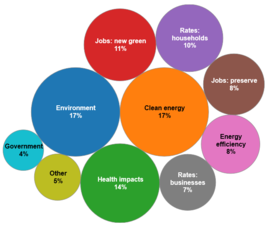
The
Clean Power Plan is a rule developed by the EPA that gives states targets for
reducing carbon dioxide (CO2) emissions from power plants. Minnesota has a lot of options for how we
might comply. Although the Clean Power
Plan is currently on hold in the federal courts, Minnesota is continuing to
engage with stakeholders to better inform any future plans.
Please
take this short survey (five minutes or less) and tell us what you think is most
important for Minnesota to consider in developing our state’s Clean Power Plan.
Your input will help inform future energy decisions in Minnesota. Please
take a few minutes to give us your thoughts. One response per person, please.
To
see what others have said so far, visit our “What
we’ve heard” page that summarizes key input from Clean Power Plan
listening sessions MPCA conducted around the state earlier this year.
If
you would like to provide more detailed comments on the Clean Power Plan in
Minnesota, please feel free to email us at any time at CleanPowerPlan.PCA@state.mn.us.
Also, look for
our Clean Power Plan “Dotmocracy” survey at this year’s Minnesota State Fair!
We’ll have the survey, in poster form, at the Eco Experience for several days
throughout the Fair. Thank
you for providing your input as we work to develop a plan that works best for
Minnesota!
|
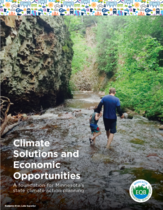
In July, the Environmental Quality Board and its member
agencies released a report on the multi-agency Climate
Solutions and Economic Opportunities (CSEO) initiative exploring policy
options to address climate change and grow Minnesota’s economy. On July 20th, the EQB hosted an
event to begin a dialogue on the report’s conclusions and how the state should
move toward implementing some of its recommended policies.
The CSEO report found that, while Minnesota has made
important strides in our efforts to reduce greenhouse gas (GHG) emissions, we
are not on track to meet the goals set in the 2007 Next Generation Energy Act. (The Act set targets for energy conservation,
renewable energy use, and GHG reductions.) The Report offers key policy options that have
the potential to both reduce the state’s GHG emissions and grow jobs and
economic opportunities in the state.
Some of the recommended policies include suggestions on how to rely more
on renewable energy, increase energy efficiency, provide opportunities for
multimodal transportation, and encourage conservation best practices on working
lands.
|
 The July event brought together a mix of citizens and
representatives from non-profits, private businesses, and state and local
governments to discuss policy options and how Minnesota should move forward to
action on climate change. Lt. Governor
Tina Smith opened the event by encouraging Minnesota to push beyond the status
quo to seriously address climate change.
Stakeholders added their voices to the conversation with a live survey
that highlighted priority efforts like increasing renewable energy, retiring
coal plants, and strengthening energy efficiency standards.
Participants and agency commissioners also expressed a
strong, shared commitment to incorporating environmental justice into the
dialogue. They expressed the need to
ensure that the negative impacts of climate change are not felt
disproportionately by vulnerable communities and that the benefits of policies
to address GHG emissions are shared by all Minnesotans, especially those who
have often been left out of these opportunities in the past.
To learn more about the CSEO effort, visit the EQB’s website.
|

The MPCA recently
launched a new website that allows users to compare
Minnesota’s air quality to State and National Ambient Air Quality Standards.
The website summarizes air monitoring results for the six criteria pollutants
with air quality standards: carbon monoxide, particulate matter, lead, nitrogen
dioxide, ozone, and sulfur dioxide. Using interactive maps, charts, and tables,
users can explore how air quality varies over time and location.
|
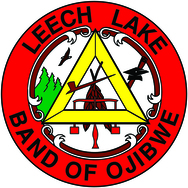
The Leech Lake Band of Ojibwe is collaborating with other
organizations at Leech Lake, the local utility, and the Rural Renewable Energy
Alliance to deploy the first community solar installation in Indian Country anywhere
in the nation.
The installation will include hands-on training for Leech
Lake Band members in the growing solar industry, and the electricity produced
will be completely dedicated to benefit low-income Band members. The Band has already taken major steps to
become sustainable on a variety of fronts, including installing 19
solar-powered furnaces across its reservation, initiating a local foods
campaign, implementing a large, multi-building energy-savings project, and
becoming the first Tribe to be recognized as a Step 2 Tribal Green Step Nation. To learn more about the Leech Lake Band’s
environmental and sustainability efforts, visit their website.
|
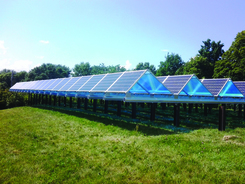 Community Shared Solar offers the potential for more people
to participate in the renewable economy by centrally locating solar arrays that
then supply energy to a sponsoring community.
Community solar can remove many of the obstacles to participating in renewable
generation, such as lack of suitable on-site locations due to shading or other
issues, or renting rather than owning a home. On an individual level, low-income households spend about 15-20% of
their income on energy-related expenses. This puts a strain on already tight
budgets and makes families significantly more susceptible to rising energy
costs. On a community level, renewable energy provides broad benefits,
including local jobs, economic growth, use of local renewable resources for
energy production, and lower pollution.
The Rural Renewable Energy Alliance secured funding for the
installation at the Leech Lake Reservation. RREAL is a nonprofit organization
that works to remove barriers to participation in the renewable energy market
by delivering solar energy systems to low-income people and communities. To learn more, visit their website.
|
Annual emissions and discharge estimates are an important
component of tracking progress on reducing air and water pollution and
understanding the relative contributions of pollution sources. Every two years, the MPCA is required to
submit a report to the Legislature on the volume of pollution emitted or
discharged to the state’s air and water resources. The 2016 report provides updates on:
-
Greenhouse Gas Inventory
-
Minnesota Criteria Pollutant Air Emission
Inventories
-
Air Toxics Emission Inventory
-
Water Quality National Pollutant Discharge Elimination
System (NPDES) Discharge Monitoring Reports
-
Water and Soil Resources eLINK database
Click here
to read the report. Comments and
questions should be directed to azra.kovacevic@state.mn.us
or pat.engelking@state.mn.us at
the MPCA.

Across the state, local governments are making strides in
reducing their contributions to climate change and air pollution. One way they are making their commitments
known is through joining Minnesota’s Green Step Cities program, a voluntary program
to challenge, assist, and recognize cities working to achieve their goals for sustainability
and quality of life. Green Step Cities
promotes 29 best practices focusing on cost savings, reducing energy use, and
encouraging civic innovation. Many of
these best practices, in categories ranging from land use and transportation to
building practices and parks and trails, help cities reduce emissions and
protect their citizens from the harmful effects of air pollution.
Two big commitments recently came from Rochester and Cologne. Rochester is the first city to set a
city-wide goal of using 100% renewable energy for its electricity, heating and
cooling, and transportation by 2031 (more here), and Cologne is the first city in Minnesota to rely
on a community solar garden to power 100% of its city operations (more here).
Learn more about what your city can do on the Green Step Cities website. Contact Philipp Muessig with questions.
|

Products and solvents used in
degreasing are an important part of many industrial processes. Unfortunately, many of these products release
harmful air pollutants that can impact the health of employees and
neighbors. But not all solvents are
created equal – some emit lower amounts of volatile organic compounds (VOCs)
that react in the atmosphere to form ozone (smog) and other hazardous air
pollutants (HAPs). However, finding
safer products that work is never an easy task.
That’s why the Minnesota Technical Assistance Program is partnering with
small businesses around the state to run pilot programs to test products.
The products listed in the tables in
this brochure
are considered by MnTAP to be free of HAPs and have lower potential to generate
ozone. The products highlighted in
yellow performed as well as more hazardous products for specific tasks
at MnTAP pilot project companies. Products without the yellow
highlights have formulations similar to the tested products: performance
is expected to be similar, but there aren’t test results to prove it yet.
When looking for safer products to use
at your business, consider these best practices:
- Look for
products that say non-chlorinated low VOC, 50-state compliant, or non-chlorinated
- Avoid
chlorinated or non-flammable brake cleaners
- Look at the product’s
Material Safety Data Sheet to determine if it contains HAPs like xylene,
toluene, ethyl benzene, or methanol
-
Check out the Minnesota Department of Health - Chemicals of High
Concern list for other harmful chemicals to
avoid.
For more resources, see the recent
issues of MnTAP’s Source
Newsletter or visit their degreasing
website.
If you need additional help sorting
through your current supplies or making changes to better products, contact
MnTAP by email at mntap@umn.edu
or by phone at 612-624-1300 or 800-247-0015.
|
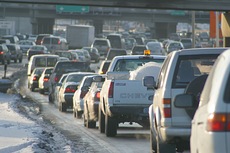
Living near heavily trafficked roadways increases our exposure to
air pollution and adversely affects our health. This connection has been shown
in many studies over the years. What has been less well understood until
recently is that the health risks of living near traffic are not fairly
distributed.
MPCA researchers have been involved in recent studies that suggest
the health risks from traffic-related air pollution are borne more heavily by people
of color and those with lower socioeconomic status. A study by MPCA staff published in May 2015 offers a
closer look at the risks from what people are breathing along roadways that
have a lot of vehicle traffic.
Researchers used data on traffic and cumulative exposures to
estimate health risks from traffic across demographic groups. Not surprisingly, the study shows the greater
the volume of traffic and the more time someone spends near that traffic, the
higher the exposures and risks. But what
the study really highlights, according to MPCA Research Scientist Greg Pratt,
is the environmental inequity of how risks from traffic-related pollution are
spread across the population.
“As you get closer to the urban core, we see households that tend
to have fewer vehicles, do less driving, use mass transit more, and yet they
are the ones that have the greater exposure to the traffic. So there’s an
inequity there – the people who do more of the driving are creating risks for
people who do less of the driving,” Pratt said.
The study, “Traffic, Air Pollution, Minority and Socio-Economic
Status: Addressing Inequities in Exposure and Risk,” is currently featured on
the Be Air Aware website, at www.beairawaremn.org.
|
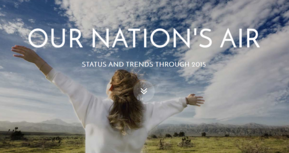
The U.S. EPA recently released their latest air quality
status and trends report in an interactive web format, available on their website. “Our Nation’s Air: Status and Trends through
2015” provides an overview of national air emissions and air quality trends.
The interactive format allows users to dig deep into the data, providing
comparisons of local air quality to national trends.
|
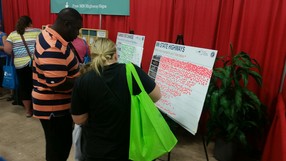
This
past year, MnDOT traveled around the state of Minnesota to gather input on the
future of transportation. The agency received over 12,450 comments across a
broad range of geographic and demographic groups. Take a look at what was learned
by downloading the executive summary of engagement.
This
input sets the stage for new policy and investment guidance for Minnesota’s
transportation future. MnDOT has been busy writing the Statewide Multimodal
Transportation Plan, the Minnesota State Highway Investment Plan, and the
Greater Minnesota Transit Investment Plan. Watch www.minnesotago.org for draft plans coming later this summer and more opportunities
to comment.
|
Volkswagen consent
decree
On July 6, 2016, the Department of Justice published in the Federal Register a notice announcing a
proposed partial consent decree to address Volkswagen’s alleged illegal use of
emission control “defeat devices” in nearly 500,000 diesel vehicles in model
years 2009-2015. Under the proposed
settlement, VW agrees to pay nearly $15 billion – $10.033 billion to compensate
consumers, $2.7 billion for a Mitigation Trust Fund to be allocated to states
and tribes to use on emission-reduction projects, and $2 billion for zero emission
vehicle infrastructure and education. Under
the proposal, Minnesota could receive $43.6 million for projects to repower and
retrofit old, high-polluting diesel engines.
For more information, visit the EPA’s website.
New study on air
pollution and heart disease
The results of a 10-year study of 6,000 people across six
cities was recently released and shows that long-term exposure to air pollution
accelerates deposits of calcium in heart arteries. The study, led by the University of
Washington, concludes that higher concentrations of air pollutants can
contribute to an increased rate of build-up that hardens the arteries and can
lead to heart attacks. To learn more,
check out this
article in The Seattle Times.
Air Mail is a quarterly,
email-based newsletter featuring updates on air quality issues and the work of
the MPCA and our partners. Subscribers to this list also receive Air Mail
Bulletins, which provide time-sensitive regulatory and technical updates.
To see past issues, Air Mail
Bulletins, or to subscribe, visit the MPCA's website.
If you have questions
or comments about Air Mail, please feel free to contact Amanda Jarrett Smith at
amanda.smith@state.mn.us.
|













